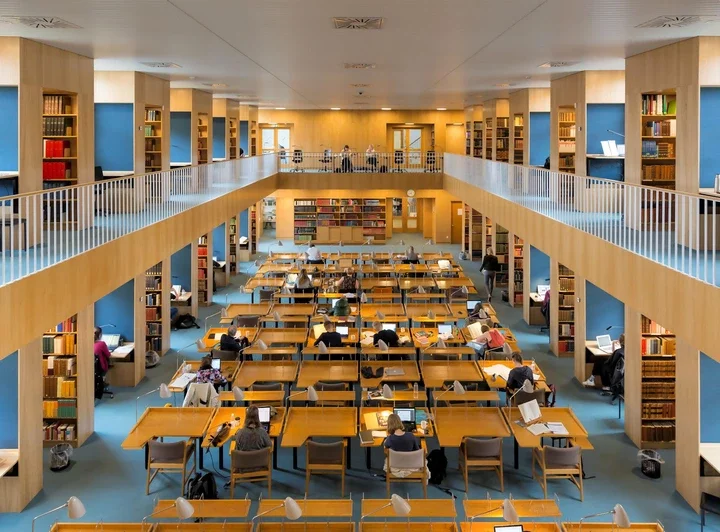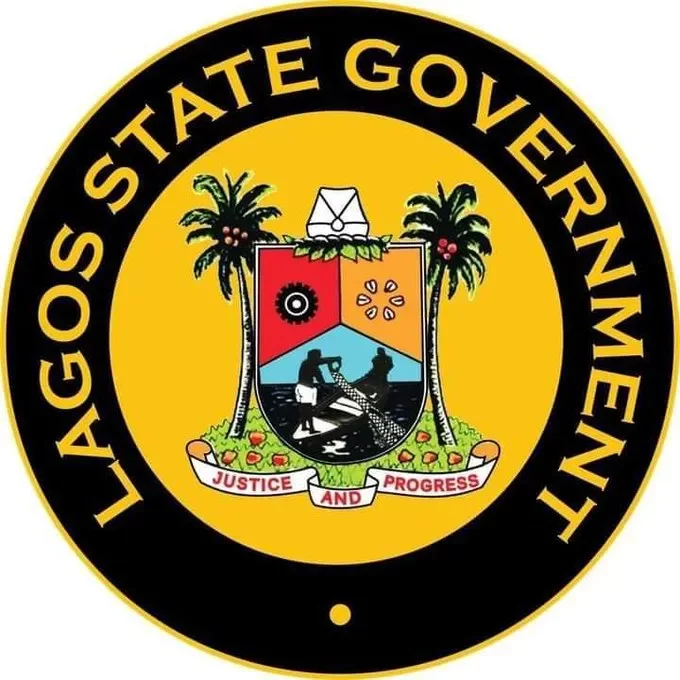Ever wonder what the difference is between all those libraries you see around town? Like public libraries, school libraries, academic libraries. They may look similar on the outside, but on the inside, they serve very different purposes. The books, resources, and services offered at each type cater to their specific users and communities. In this article, we'll break down the major types of libraries, look at their unique functions and features, and help you understand exactly what role each type plays. You'll learn the key differences between public, school, academic, and special libraries. You'll discover which type is best suited for your own interests and needs, whether you're a student, scholar, reader, or lifelong learner.
What Is a Library?

A library is a place where knowledge and information are stored in the form of books, magazines, newspapers, journals, etc. The main purpose of any library is to provide resources and services for learning, research, and education. At its core, a library is a collection of information and resources for public use. Historically, libraries contained mostly books and periodicals. Today, libraries offer so much more, such as e-books, audiobooks, movies, music, online resources, and community meeting spaces.
Types of Libraries
There are different kinds of libraries that serve various functions. Public libraries provide resources for the general public and often offer events and classes for all ages. Academic libraries support schools, colleges, and universities. Special libraries are found at organizations like hospitals, corporations, and government agencies.
Academic Libraries

Academic libraries are found in colleges, universities, and other institutions of higher education. They primarily serve the needs of students, professors, and researchers by providing access to scholarly resources and study spaces.
The collections in academic libraries focus on academic subjects taught at the institution, like history, science, and literature. You'll find books, academic journals, conference papers, and more. Many also provide access to digital resources like ebooks, online journals, and research databases.
The main purpose of an academic library is to support the curriculum of its institution. So, the collections are tailored to the courses offered on campus. They aim to provide students and faculty with the resources they need for learning, teaching, and conducting research.
Public Library

Public libraries are open for public access and provide free services to communities. They offer a quiet space for reading, studying, and relaxing. They house a wide range of fiction and non-fiction books, newspapers, magazines, audiobooks, and movies for people of all ages.
Libraries also provide free access to computers and the Internet for those who may not otherwise have access. Many libraries offer free programs and classes for all ages, such as story time for children, book clubs for adults, and free tutoring or skills training.
Public libraries depend on funding from local and federal governments and private donations to operate. They provide an important public service by giving communities free access to information and resources for learning and enjoyment.
School Library

The school library is located within the school building and aims to provide resources for students to expand their knowledge. The primary purpose of a school library is to support the curriculum and learning needs of students.
School libraries are a crucial part of any school. They provide resources for students to improve their knowledge and skills. It has fiction and non-fiction books, reference materials like encyclopedias and dictionaries, magazines, and newspapers. Students can borrow resources like books, ebooks, audiobooks, and DVDs.
Special Library

Special libraries are information centers set up by special institutions like government departments, research institutions, associations, museums, hospitals, etc., to cater to the specialized information needs of the parent organizations.
A special library focuses on a particular subject area or client group. It provides in-depth information resources and services tailored to the needs of a specific organization or industry. For example, a special library may serve a law firm, hospital, government agency, or corporation. It typically contains materials related to the mission and work of its parent organization.
Digital Library

A digital library is a library that stores collections in electronic formats and is accessible via digital tools. Rather than physical books, they contain e-books, digital copies of print books, online journals, and articles.
They offer many benefits over traditional libraries:
Accessibility: Materials can be accessed remotely 24/7. No physical visit is required.
Searchability: Collections are indexed and fully searchable. You can find what you need quickly.
Preservation: Digital materials do not deteriorate like physical books. They remain pristine no matter how often they are accessed.
Storage: A vast collection can be stored in a small physical space. No need for huge buildings.
Cost: It's more affordable to maintain a digital library versus a physical one.
Sharing: Digital materials can easily be shared and accessed by many people at once.
So, if you want a library at your fingertips that's open all hours, a digital library is the modern solution. While not quite the same as browsing physical book stacks, it offers significant advantages for learning and research in the digital age.
Medical Library

A medical library focuses on health sciences and supports the information needs of hospitals, medical schools, physicians, nurses, and health care researchers. It provides access to medical journals, textbooks, and databases.
The collection includes print and digital books, journals, and databases covering medicine, nursing, pharmacy, dentistry, and allied health. Librarians can help you search medical literature and find evidence for clinical decisions or research topics. Medical libraries may offer services like interlibrary loans, printing, scanning, and copying.
Some well-known medical libraries in Nigeria are the National Hospital Abuja Medical Library and The Latunde Odeku Medical Library, College of Medicine, University of Ibadan. Medical libraries play an important role in advancing health and improving lives by organizing and providing access to health information when and where people need it.
Slide Library

A slide library contains a collection of slides on a particular topic or subject. The slides can be text, images, or a combination of both. The main purpose of a slide library is to allow reuse of slides in different presentations.
For example, a company may build a slide library with an overview of the company, products, services, processes, etc. Presenters can then pick and choose relevant slides for their presentations instead of creating new slides from scratch for each presentation. The slide library promotes consistency in messaging across presentations and saves time.
Some tips for creating an effective slide library:
Organize slides into categories and subcategories for easy navigation.
Include a mix of content like stats, facts, examples, case studies, quotes, etc.
Use a consistent template and style for all slides.
Review and update slides regularly to keep content current.
Allow collaborators to suggest new slides or edits to existing ones.
Make the slide library easily accessible to anyone who needs to create a presentation.
A well-designed slide library is a valuable resource for any organization. It ensures consistent and compelling content in all of your presentations.
Archival Library

Archival libraries contain materials of research and historical significance. Their collections are non-circulating, meaning materials do not leave the library. Researchers visit the archive to access rare books, documents, letters, photographs, maps, and more.
Archival libraries require controlled environments to properly preserve their aging collections. Low light levels and regulated temperature and humidity are essential for conservation. Due to the fragile nature of materials, archivists carefully monitor how frequently certain items can be accessed or reproduced.
Mobile Library

A mobile library is a library housed in a vehicle that travels to locations to provide library services. It aims to serve communities that lack a public library.
The mobile library vehicle, typically a specially converted van, bus, or truck, contains a variety of reading materials like books, newspapers, and magazines, which people can borrow for a fixed time period. It visits schools, community centers, and rural areas on a rotating schedule. For some, it's the only access to a library in their area.
Mobile libraries play an important role in promoting literacy and education in underserved communities. They make knowledge and information more accessible to all.
National Library

National libraries collect and preserve the published heritage of a country. They maintain a comprehensive collection of that nation's books, periodicals, newspapers, government publications, and other materials. National libraries often have rare book collections and archives that provide a snapshot of the cultural and historical development of that country.
A national library plays an important role in preserving and conserving the cultural heritage of a nation. It houses books, manuscripts, maps, newspapers, magazines, films, photographs, and other records that are essential parts of a nation's memory and identity. For example, the Library of Nigeria, located in Abuja, and the National Library, Kwara. Its mission is to support Congress, advance knowledge and creativity, and preserve Nigeria's history.
OPAC (Online Public Access Catalogs)

OPAC (Online Public Access Catalog) is an online database containing bibliographic records created according to international standards. OPAC allows users to search for print and electronic resources available in the library. OPACs are available on the library website and within the library premises. OPACs have greatly improved access to library collections by allowing users to search the catalog remotely from their homes or offices as well as within the library.
Hybrid Library

The hybrid library combines the best features of the traditional library and the digital library. It allows users to access both physical collections like books and periodicals as well as electronic resources like e-books and online databases from anywhere, anytime.
The hybrid library provides a collaborative environment for users to study, learn, and share knowledge. It bridges the digital divide by providing information in both print and electronic formats. The users can choose the format that suits them best. The hybrid library is highly flexible and customizable based on the needs of the users.
Universal Library

A universal library contains a large collection of all types of reading materials, audio-video resources, and digital databases on almost all subjects to meet the needs of a diverse group of readers.
A universal library caters to the needs of all groups of readers: children, youth, adults, professionals, researchers, etc. So, it has materials suitable for all reading levels and interests. It aims to provide resources for recreation as well as education and career advancement.
It has a diverse collection, including books, e-books, audiobooks, DVDs, research papers, databases, etc., on all major disciplines - arts, science, technology, medicine, religion, languages, etc. There are materials on both popular and academic subjects.
It offers various services like lending books, providing reading spaces, conducting educational and recreational activities, training on information literacy skills, interlibrary loans, etc. Its goal is to facilitate easy access to information and knowledge for people from all walks of life.
In short, a universal library is a democratic institution that promotes learning and spreads knowledge in the community through its diverse, inclusive, and accessible resources and services. It plays an important role in shaping an enlightened and progressive society.
Data Library

A data library is a collection of data that has been acquired and stored for future use. Unlike a traditional library, which stores books and publications, a data library stores information in electronic format. It contains a wealth of raw data, statistics, records, archives, and datasets on various topics that users can access.
The main purpose of a data library is to provide a centralized repository of data that can be reused and analyzed for research and decision-making. The data is carefully organized, classified, and indexed to make it easy to search and retrieve the information you need. Some data libraries are open-access, allowing public use of data, while others require permission or subscription to access the data.
Multimedia Library

A multimedia library contains a variety of media formats like audiobooks, movies, music, newspapers, magazines, and more. In addition to traditional books and reference materials, multimedia libraries provide access to information and entertainment in electronic formats.
Some of the popular types of resources you'll find in a multimedia library include:
eBooks and eAudiobooks - Electronic versions of books and audiobooks that can be downloaded to e-readers, tablets, smartphones, and laptops.
Streaming music and movies - On-demand access to songs, TV shows, documentaries, and films over the Internet.
Digital newspapers and magazines - Electronic replicas of print periodicals that can be viewed on computers, tablets, and mobile devices.
Online databases - Searchable collections of articles, reports, images, and more on a wide range of topics.
With a mix of physical and digital resources, multimedia libraries offer convenient and eco-friendly ways to access information while still maintaining the experience of browsing library stacks. They provide a glimpse into the future of libraries.
In summary, libraries of all types offer invaluable benefits to individuals and society as a whole. They provide free access to knowledge and resources for learning, research, and enjoyment. No matter what type of information you need, there's a library that can help.
Benefits of Using a Library
Libraries offer so many advantages that many people overlook or take for granted. Here are a few key benefits of using your local library:
Access to a huge collection of books and resources for free. You have a wealth of knowledge at your fingertips on almost any topic imaginable. Why buy when you can borrow?
A quiet, distraction-free place to study or work. If you need to focus, the library offers a perfect escape from the noise and busyness of everyday life.
Computer and internet access. Most libraries offer free computer and Wi-Fi access if you don't have it at home.
Expert help from librarians. Librarians can help you find information on any subject and recommend resources tailored to your needs. Their knowledge and assistance are invaluable.
Entertainment and culture. Libraries aren't just for research and studying. They also offer movies, music, magazines, cultural events, and activities for all ages.
Lifelong learning opportunities. Libraries often host or promote free events like book clubs, lecture series, resume help, or computer classes. There's always an opportunity to learn and grow.
A welcoming community space. Public libraries aim to serve all members of the community. They are inclusive, accessible, and welcoming to people from all walks of life.
Preservation of knowledge. By borrowing from libraries instead of buying personal copies, you support the library's ability to archive and preserve information and resources for future generations. Your library use makes a difference.
Tips for Finding Different Types of Libraries
Libraries play an important role in promoting literacy and education in society. They serve as a storehouse of knowledge and preserve information for future generations. No wonder libraries are considered temples of learning.
Public Library
The public library is open for anyone to access. It provides resources for learning, education, and entertainment. Public libraries offer free services like book lending, audiobooks, e-books, online resources, and more.
Academic Library
Academic libraries are located at colleges, universities, and other institutions of higher education. They primarily serve students, faculty, and staff. Academic libraries provide resources and services tailored to support the institution's curriculum.
School Library
School libraries are located in schools, especially kindergarten to secondary schools. They are designed to support students' learning and literacy development. School libraries provide age-appropriate resources like books, magazines, and online resources for students.
Special Library
Special libraries are located within organizations and businesses. They provide specialized resources for a targeted audience, often employees. The collections focus on a specific subject area, industry, or type of information based on the organization's needs.
Digital Library
Digital libraries provide digital resources, including e-books, articles, images, videos, and audio files. Users can access the digital library online from anywhere with an Internet connection. Many traditional libraries now offer digital libraries in addition to their physical collections.
Mobile Library
Mobile libraries bring library services and resources directly to communities that may lack a physical library building. They use vehicles outfitted with collections, technology, and staff to provide services at designated stops. Mobile libraries aim to increase access to information for all.
Frequently Asked Questions
Have some questions about the different types of libraries and what each offers? Here are some common FAQs:
What's the difference between an academic and a public library?
Public libraries serve the general public and typically offer popular fiction and nonfiction books, magazines, and multimedia. Academic libraries are located at colleges and universities and focus on supporting students and faculty research needs.
What resources can I access at a special library?
Special libraries are dedicated to a specialized topic, like law, medicine, or architecture. They provide highly targeted resources for people in those fields, like academic journals, research databases, and reference materials.
Can I check out books from a digital library?
Digital libraries provide electronic resources like ebooks, audiobooks, music, movies, and databases. Most don't allow physical borrowing of materials. However, some public and academic libraries provide access to additional digital content through online platforms.
Do national libraries lend books to individuals?
National libraries, like the Library of Congress, typically serve as research institutions and don't lend directly to most individuals. However, they work to preserve important historical and cultural documents to make them available to researchers and scholars. Some contents may be accessed online by the general public.
Conclusion
So there you have it, the main types of libraries and what they're all about. Academic libraries help students and faculty with research and accessing information. Public libraries provide free resources to the community. Special libraries focus on specialized subjects for particular groups. Digital libraries make information available online. No matter what you're looking for, there's a library out there to meet your needs. With so many options, take some time to explore the libraries in your area. You never know what hidden gems you might uncover when you start poking around those book stacks. And don't forget, libraries aren't just about books anymore. They also provide services, classes, meeting spaces, and expert help.

















Comments